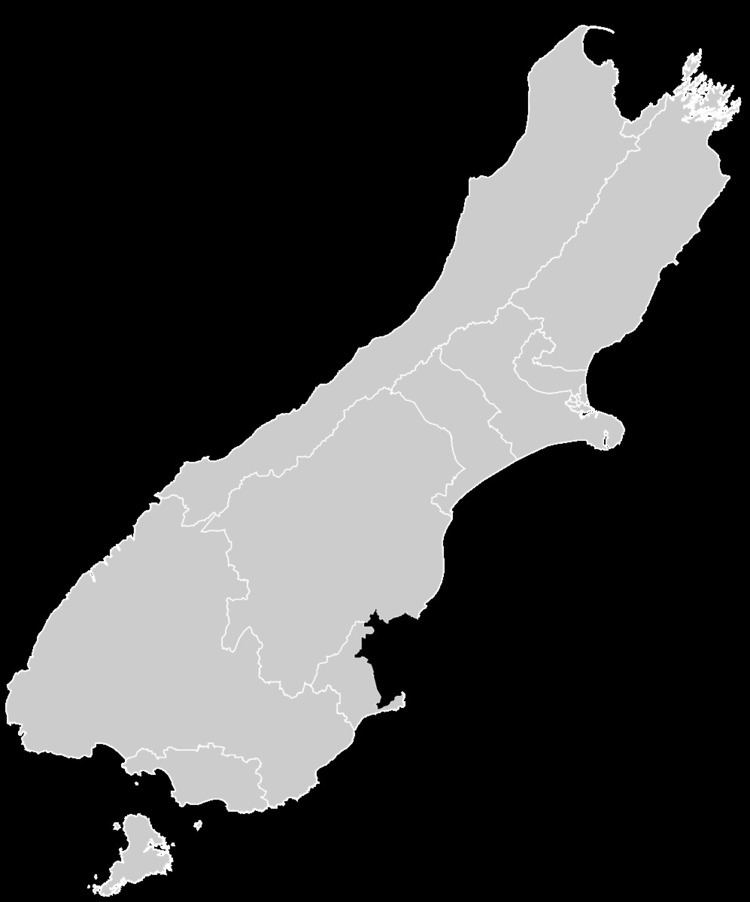 | ||
Dunedin North (known as North Dunedin between 1946 and 1963) is a New Zealand parliamentary electorate, returning one Member of Parliament (MP) to the House of Representatives of New Zealand. It was established for the 1905 election and has existed since. It is currently held by David Clark of the New Zealand Labour Party, who replaced the long-standing representative Pete Hodgson. It is considered a safe Labour seat, with Labour holding the seat for all but one term (1975–1978) since 1928.
Contents
Population centres
Through the City Single Electorates Act, 1903, the three-member electorates of the four main centres were split again, and this became effective at the end of the 15th Parliament and was thus used for the 1905 election. The City of Dunedin electorate was split into the Dunedin Central, Dunedin North, and Dunedin South electorates.
As the name suggests, the Dunedin North electorate covers the northern half of the city of Dunedin. It is bordered by Waitaki in the north, Dunedin South in west, south, and south-east, and the Pacific Ocean in the north-east.
The electorate covers what is the equivalent of the Waikouaiti Coast-Chalmers ward of the Dunedin City Council outside the actual urban area of Dunedin. This includes the population centre of Waikouaiti, Karitane, Waitati, Seacliff, Warrington, Port Chalmers, Sawyers Bay, Roseneath, and Aramoana. The 2013 redistribution saw the electorate expand to include Palmerston, Macraes Flat, Moeraki, Hampden and Herbert-Waianakarua.
In urban Dunedin it covers most of northern, central and western Dunedin. This includes the city centre and the suburbs of City Rise, Pine Hill, Dunedin North, North East Valley, Opoho, Ravensbourne, Mornington, Roslyn, Maori Hill, Leith Valley, Kaikorai Valley, Brockville, Halfway Bush, and Wakari.
Socio-economic make-up
A notable influence on voting patterns in the electorate is the location of the University of Otago and Otago Polytechnic in Dunedin North. The electorate has the highest proportion of persons aged 15 to 19 in the country, with 14.1%. It also has the highest proportion of people on a student allowance (8.8%), employed in the education and training industry (11.7%), and employed in the health care and social assistance industry (12.3%).
Dunedin North has a low rate of enrolment compared to New Zealand as a whole. As of 31 May 2012, 78.4% of the estimate eligible population is enrolled to vote, compared to 92.8% nationally. The figure is brought down by the low number of people aged 18 to 24 enrolled — less than half (47.5%) of the estimated eligible population is enrolled, compared to 75.2% nationally. Enrolments of those aged 25 and over are comparable to the national averages.
History
The electorate was created in 1905, when the City of Dunedin electorate with three members of parliament (and other main centre multi-member electorates) were broken up. From 1946 to 1963 it was called North Dunedin.
The first representative was Alfred Richard Barclay, who had previously represented the City of Dunedin electorate. In the 1908 election, he was defeated by G. M. Thomson, who served for two parliamentary terms before being defeated.
Barclay was succeeded by Andrew Walker representing the United Labour Party in the 1914 election. The remnants of United Labour formed the New Zealand Labour Party in 1916 and Walker became the new party's first President. He served for one parliamentary term until the 1919 election, when he was defeated by the Independent Edward Kellett. Kellett died during the parliamentary term on 15 May 1922, and this caused the 1922 by-election, which was won by James Wright Munro.
Munro was confirmed at the 1922 general election, but was defeated by Harold Livingstone Tapley in the 1925 election. Munro in turn defeated Tapley at the 1928 election and then served the electorate until his death on 27 May 1945.
Munro's death caused the 1945 by-election, which was won by Robert Walls. Walls served the electorate until his death on 6 November 1953. This caused the 1953 by-election, which was won by Ethel McMillan, who served the electorate until her retirement in 1975.
McMillan was succeeded by Richard Walls of the National Party in the 1975 election, who held the electorate for one parliamentary term before being defeated by Labour's Stan Rodger in the 1978 election. Rodger retired in 1990 and was succeeded by Pete Hodgson. Hodgson served the electorate until his retirement in 2011. Hodgson was succeeded by David Clark in the 2011 election, when he beat Michael Woodhouse. In the 2014 election, Clark was again successful against Woodhouse and managed to increase his majority.
Members of Parliament
Key
Liberal-Labour Independent Reform United Labour Labour Independent Labour National Green ACT
List MPs
Members of Parliament elected from party lists in elections where that person also unsuccessfully contested the Dunedin North electorate. Unless otherwise stated, all MPs terms began and ended at general elections.
2011 election
Electorate (as at 26 November 2011): 40,356
